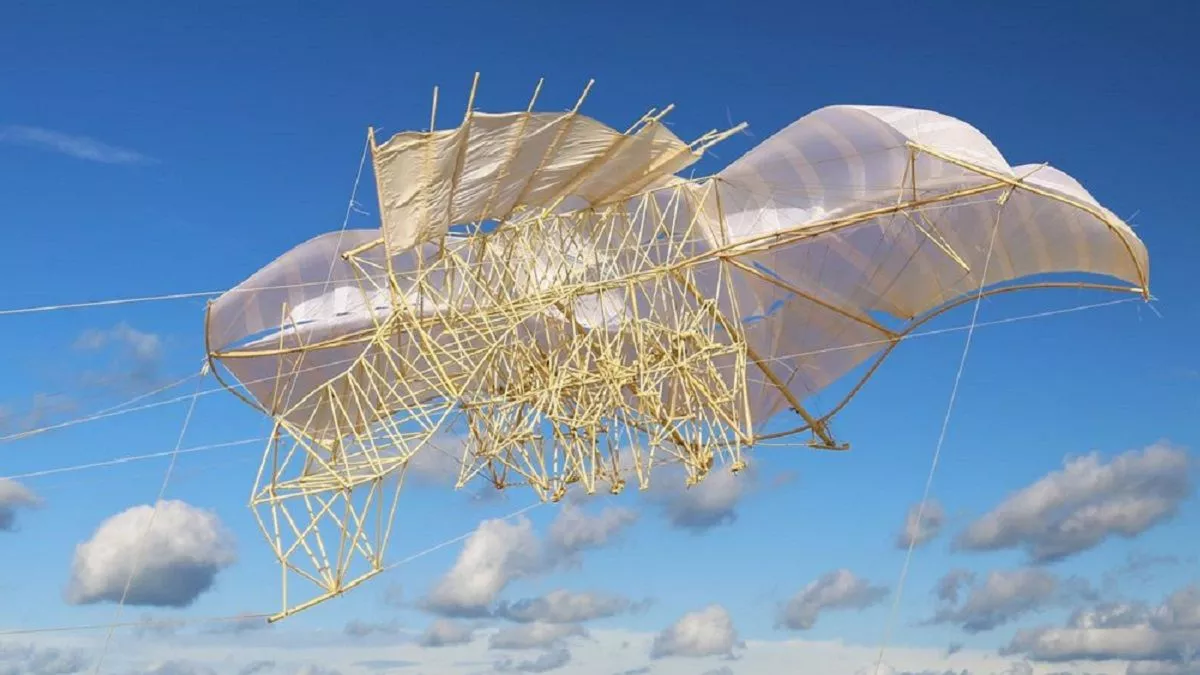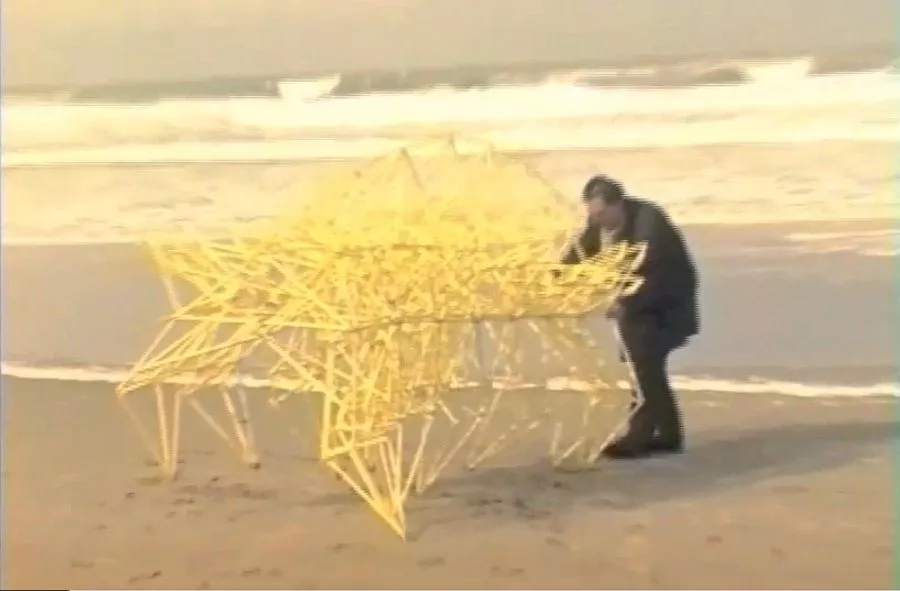Strandbeests, The Man-Made Beach Creatures Of The Netherlands

If you visit the Netherlands, there’s a chance you might spot a giant insect-like structure on one of its beaches. Once you see it, the first few moments could feel borderline creepy, but the longer you observe these man-made creatures aka Strandbeests, the likelier you are to feel awestruck by the ingenuity that went behind creating them.
Strandbeests is the anglicized term for the Dutch word, Strandbeesten, which translates to “sand beasts.” These complex moving structures are the creation of Dutch artist Theo Jansen. He has worked on the Strandbeests project since 1990 and continues to exhibit new variants on beach sessions in the Netherlands.
Reading about these sand beasts is surely interesting, but watching them walk autonomously is a sight to behold. Now, we can’t teleport you to a Strandbeest session right away, but here’s the next best thing: a video showing these sand beasts in action.
Strandbeests are built from yellow plastic tubes, also called Dutch electricity pipes, and use wind energy to achieve locomotion. Over the past three decades, these sand beasts have evolved across different iterations. According to Jansen, his creation has gone through 12 periods of evolution.
The evolution of the Strandbeests
The Dutchman created his first Strandbeest in 1990 and kicked off the first period of evolution, the Gluton period. He used many meters of plastic tube and adhesive tape to create the structure. His premier attempt at making the same stand, let alone make it walk, was unsuccessful.
A year later, Jansen replaced tapes with nylon cable ties to bind the pipes together as part of the Chorda period. This iteration also introduced a new walking system which worked impressively well. This meant the Strandbeest could finally stand and walk.

In the Calidum period, Jansen discovered the application of a heat gun in assembling the Strandbeests. He experimented with using wood instead of plastic tubes with the Lignatum-period sand beasts. By the Vaporum period, these man-made creatures could store wind energy to move autonomously. In other words, they need not rely on real-time wind conditions.
Through the successive years, the Strandbeests received some useful enhancements. These include the ability to sense and avoid water and loose sand (Cerebrum period), a harmonious gait (Suicideem period), and the ability to walk on rough terrains using a caterpillar-like frame (Bruchum period).
The latest period of evolution of the Strandbeests, the Volantum period, saw them temporarily fly for the first time. The Ader structure used flight as a way to outlast sandstorms on the beach.
It’s evident that these sand beasts are driven by a lot of hard work and innovation from the Dutch artist. That’s why the Strandbeest exhibition bookings are full at the time of writing. Would you want to go check out a Strandbeest show when you visit the Netherlands? Let us know in the comments below.
On the other side of the world, in South Korea, there’s another inspiring artist who is working on restoring broken structures using his magic pen.






